Apple iPhone 4S: Thoroughly Reviewed
by Anand Lal Shimpi & Brian Klug on October 31, 2011 7:45 PM EST- Posted in
- Smartphones
- Apple
- Mobile
- iPhone
- iPhone 4S
Improved Baseband - No Deathgrip
We’ve mentioned already that the 4S is more of an evolution of the CDMA iPhone 4 than the GSM/UMTS iPhone 4, and where that’s most obvious is again is its cellular architecture. When we reviewed the GSM/UMTS iPhone 4, we investigated and explained why its design made it especially prone to unintended attenuation when held a certain way. Apple remedied the situation somewhat by giving away free cases, but only in the case of the CDMA iPhone 4 was the fundamental design issue remedied by adding receive diversity with a second cellular antenna at the top.
The 4S builds on this architecture by incorporating the same diverse receive path with two U shaped antennas at top and bottom, and adding transmit diversity to the equation. I’m being a bit fast and loose with the term “diversity” here, since the 4S cannot transmit simultaneously on both antennas, but rather switches between the two antennas based on which has the least receive fading. Receive diversity is a bit more interesting to explain, since the 4S appears to be able to dynamically decide whether to select one of the two receive paths (in the case that one is much more faded than the other), or combine the two (using something like maximal-ratio combining) and get a better quality equivalent signal.
When I talked about the CDMA 4’s receive diversity scheme, I went into detail to prove that this feature was present. With the 4S, these diversity features are much easier to talk about because Apple has been directly forthcoming about the feature this time. In addition, the transmit switching part of the equation is discussed at length in Apple’s FCC disclosure (since the FCC is interested in scrutinizing transmitters), and even includes a nice diagram.
The device is capable of switching between the Primary/ANT1 and Secondary/ANT2 Antennas. The antenna switching is implemented with a physical, "break-before-make" switch such that only one antenna can be used for cellular transmission at a time.
To re-state the evolution that Apple has taken with this design, the GSM/UMTS 4 had one transmit and receive chain, the CDMA 4 added a second receive chain for diversity, and the 4S now has two receive chains and the ability to switch between two transmit chains. The result is that the phone no longer is prone to fading on either the forward or reverse link due to being held near the feed points for one chain.
To be totally thorough, you can immediately see that the 4S still incorporates the same overall design however, complete with a a U.FL connector at the bottom and a feed cable that runs up the side of the PCB to the top. From here it obviously terminates somewhere that makes contact with the top antenna.

Encircled in red: Top antenna feed cable (Original photo courtesy iFixit)
When we saw that the CDMA iPhone used Qualcomm’s MDM6600, we made an educated guess that the next device would likely be based on the same baseband. It turned out that this was pretty close to the case, as the iPhone 4S uses an unannounced Qualcomm MDM6610.
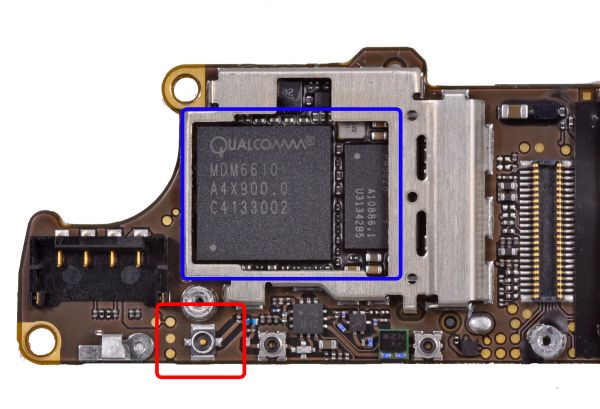
Encircled in blue: Qualcomm MDM6610 and PM8028, Red: Bottom antenna U.FL connector. Note to the right the two test pads for the two chains. (Original photo courtesy iFixit)
There are some immediate differences that stick out about MDM6610 versus MDM6600. First, 6610 doesn’t appear to include an internal transceiver, unlike MDM6600 which previously included a transceiver in its package. MDM6610’s package is correspondingly smaller, at 10x10 mm, compared to 6600’s 9.8x12.2 mm, but again you have to factor in the fact that the transceiver isn’t inside that package anymore. Based on those facts and the state of 28nm maturity, it’s almost certain that MDM6610 is still a 45nm part. The 4S uses Qualcomm’s RTR8605 IntelliCeiver transceiver for cellular RF management and also for GLONASS/GPS. We’ve seen RTR8600 before, and RTR8605 appears to just be an improvement upon that part with the same functionality. In fact, inside the MDM6610’s AMSS it’s just referred to as RTR8600.
Qualcomm isn’t ready to talk at all about MDM6610, but I’ve done a little digging and know more about this part. First off, it’s referred to as codename “Trek” inside the Qualcomm AMSS (Advanced Mobile Subscriber Software), whereas MDM6600 in the CDMA iPhone was referred to as “Phoenix.” When we first saw that the 4S was using a baseband that hasn’t been announced, we assumed it was an Apple specific one-off. However, after some digging I uncovered a reference to a GSM/UMTS only part as well: “MDM6210MDM6610”. For those that aren’t familiar, the 2 connotes GSM/UMTS compatibility, 6 adds 1x/EVDO. Apple appears to have secured MDM6610 exclusivity for the time being, but I expect we’ll see a more formal announcement of the MDM6x10 family down the road. This is pretty much par for the course for Apple when it comes to component sourcing.
| iPhone 4S - Network Support | |||||
| GSM/EDGE Support | 850 / 900 / 1800 / 1900 MHz | ||||
| UMTS/HSDPA/HSUPA Support | 850 / 900 / 1900 / 2100 MHz | ||||
| HSDPA/HSUPA Speeds | 14.4 Mbps / 5.76 Mbps | ||||
| CDMA2000 1x/EVDO Support | EVDO Rev.A (800 / 1900 MHz) | ||||
| Baseband Hardware | Qualcomm MDM6610 | ||||
MDM6610 also appears to inherit all the air interfaces that MDM6600 had, including WCDMA/HSPA+ with HSDPA 14.4, HSUPA 5.76, GSM, CDMA 1x/EVDO (up to Rev.B, though Apple notes only A is used at present), and finally GPS/GLONASS. Superficially, there don’t appear to be any major differences beyond using an external transceiver to accommodate diversity and transmit switching. In addition, the 4S contains all the same bands as the GSM/UMTS iPhone 4.
I was initially worried that Apple would go the same route that it did with both iPhone 4 launches and initially not include FieldTest. Thankfully, the 4S includes FieldTest right out of launch, which works for both CDMA and GSM/UMTS provisioned 4Ses.

iPhone 4S Field Test under CDMA Mode
There’s a corresponding difference in the interface for the two modes. On CDMA iPhone 4S mode, there are tabs for 1x and EVDO, and Rx signal strength fields for both receive paths, as well as the current transmit power. What’s interesting here is that when using the 4S in CDMA mode, you can see the receive strength change for each antenna when held.
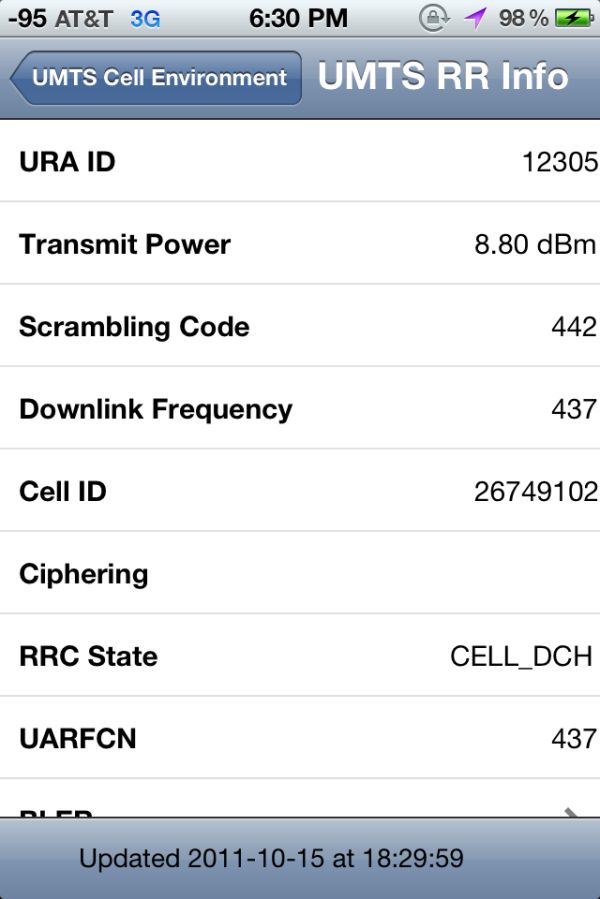
iPhone 4S Field Test under UMTS/GSM Mode
On the GSM/UMTS provisioned iPhone 4S, you don’t get individual receive strength for each chain, instead just the effective RSCP from either the selected chain or combined. If you grip the phone while watching this, you can sometimes watch RSCP race to –130 dBm and then switch entirely to the other antenna and race back up to an acceptable number. As a reminder, to get into FieldTest dial *3001#12345#* - you can then keep numerics instead of bars in the top left by force quitting FieldTest after launching it (hold down power/lock until power off appears, then hold the home button).
So how does the 4S do in our actual attenuation testing? Very well actually. I watched the RSCP of one NodeB and held the 4S all the same ways we’ve done since the 4, recorded a bunch of data, and averaged it together. What we’re measuring here is reported in dBm, and less attenuation is better (0 dBm = 1 mW).
| Signal Attenuation Comparison in dB - Lower is Better | ||||||||
| Cupping Tightly | Holding Naturally | Holding in Case | On an Open Palm | |||||
| iPhone 4S | 10.8 | 8.8 | - | 4.3 | ||||
| CDMA iPhone 4 | 16.5 | 15.5 | 9.0 | 7.9 | ||||
| GSM/UMTS iPhone 4 | 24.6 | 19.8 | 7.2 | 9.2 | ||||
| Samsung Galaxy S 2 | 18.4 | 5.9 | - | 12.2 | ||||
| Droid 3 | 16.0 | 11.3 | - | 5.0 | ||||
| HTC Sensation | 15.0 | 10.0 | 8.0 | 0.0 | ||||
| Samsung Droid Charge | 10.0 | 10.0 | 5.0 | 0.0 | ||||
| HTC Thunderbolt - LTE | 5.3 | 2.5 | - | 4.4 | ||||
| HTC THunderbolt - EVDO | 6.5 | 0.8 | - | 7.2 | ||||
| LG Optimus 2X | 13.7 | 9.3 | - | 5.9 | ||||
| Nexus S | 13.3 | 6.1 | - | 4.3 | ||||
| Droid 2 | 11.5 | 5.1 | - | 4.5 | ||||
| BlackBerry Torch | 15.9 | 7.1 | - | 3.7 | ||||
| Dell Streak | 14.0 | 8.7 | - | 4.0 | ||||
| Droid X | 15.0 | 5.1 | - | 4.5 | ||||
| iPhone 3GS | 14.3 | 1.9 | 3.2 | 0.2 | ||||
| HTC Nexus One | 17.7 | 10.7 | 7.7 | 6.7 | ||||
When we reviewed the CDMA iPhone 4, I made mention of the fact that this was the first iPhone 4 I felt comfortable using without a case. This same confidence continues with the 4S, which is in practice completely usable without a case, unlike the GSM/UMTS iPhone 4. Since launch time, Anand and myself have been using our 4Ses without cases, and the difference is dramatic.


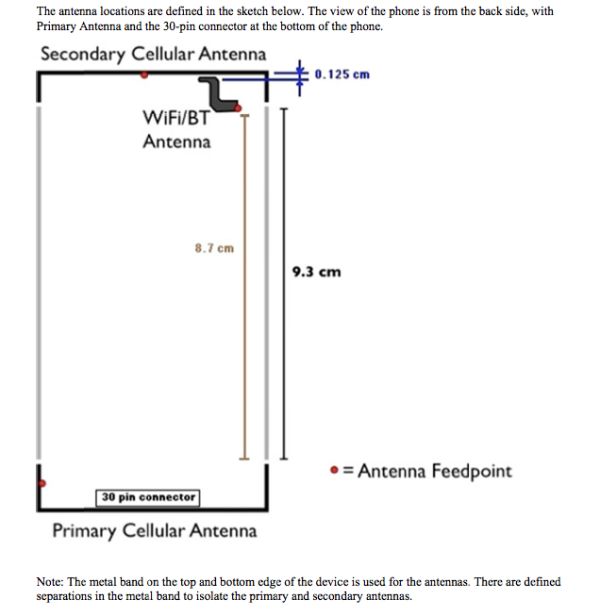
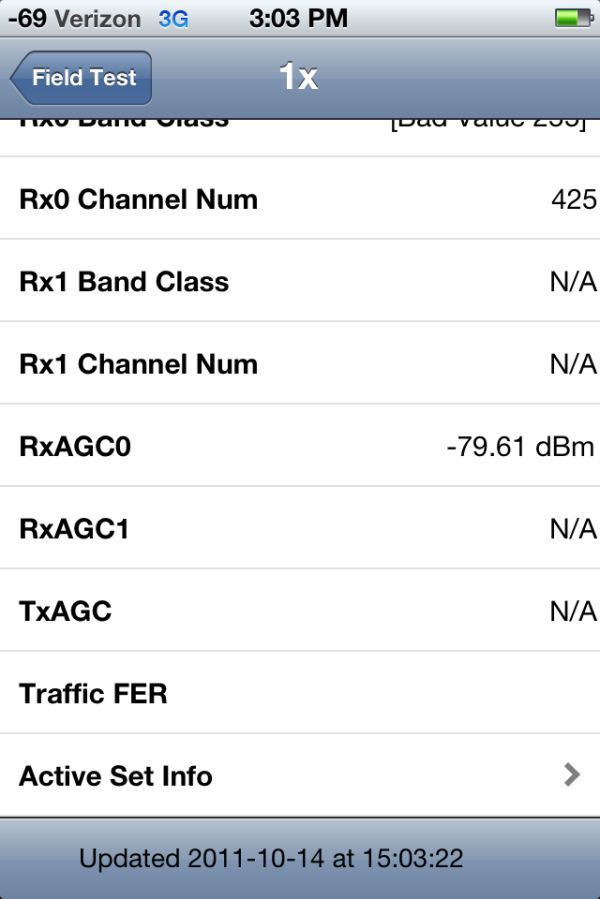
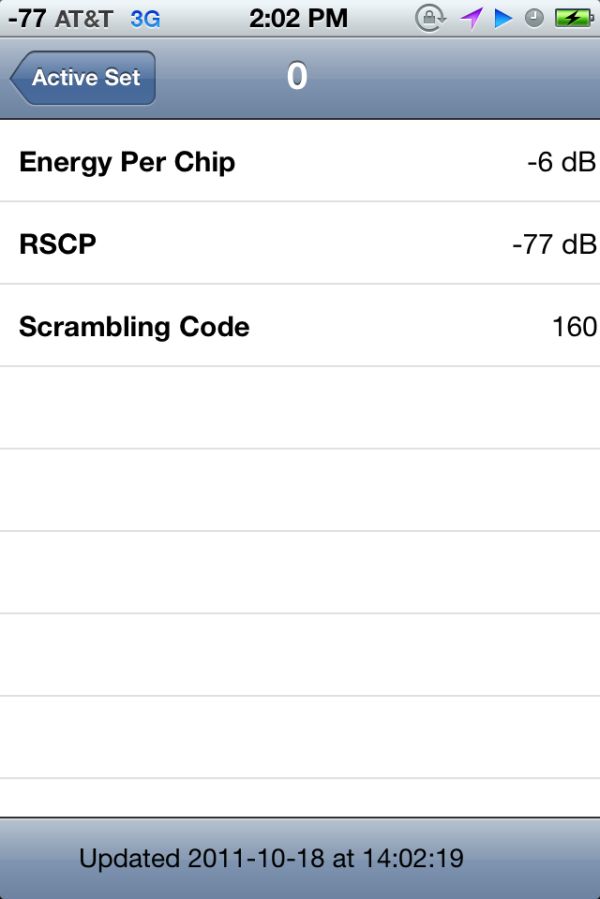








199 Comments
View All Comments
Davabled - Monday, October 31, 2011 - link
With Field test enabled, do numbers closer to zero indicate a better connection? (I'm referring to the numbers that replace the bars in the upper left corner)Anand Lal Shimpi - Monday, October 31, 2011 - link
Correct :)Take care,
Anand
Formul - Monday, October 31, 2011 - link
why the huge drop from iPad 2 to iPhone 4S in the GL benchmark pro? its only about 30% performance .... any explanation?Anand Lal Shimpi - Monday, October 31, 2011 - link
Because the number was incorrect :-P Fixed now :)Take care,
Anand
ZebuluniteX - Monday, October 31, 2011 - link
Great review as always Anand!In addition to the GL benchmark pro results Formul mentioned, I was also surprised to see the Motorola Droid RAZR for some reason do far better than other Gingerbread-based Android smartphones. It is listed as using different version of Android (2.3.5 vs 2.3.4 or older), but given that very similar results were shown between the iPhone 4S and Honeycomb-running Galaxy Tab 8.9 in your 'iPhone 4S Preliminary Benchmarks' article (where the 4S was a bit slower than the Galaxy Tab in SunSpider, and marginally faster in BrowserMark), I'm guess those are just mislabeled Galaxy Tab results. Is that the case?
Anand Lal Shimpi - Monday, October 31, 2011 - link
Thank you - be sure to thank Brian Klug as well, he really did the bulk of the heavy lifting here. I just popped in to talk about silicon and battery life.The RAZR numbers are what we ran at the RAZR announcement: http://www.anandtech.com/show/4981/motorola-droid-...
The improvement is likely due to an updated browser from Motorola. I included those numbers effectively as a placeholder until Ice Cream Sandwich arrives :)
Take care,
Anand
ZebuluniteX - Tuesday, November 1, 2011 - link
Ah, thanks for the clarification, I missed that article. Hmm, that's interesting that, apparently, Motorola "ported" Honeycomb or Ice Cream Sandwich's browser optimizations to Gingerbread (or at least I assume that's what happened)...I'm in the market for a smartphone, and while I was leaning towards the 4S since I already am in the Apple ecosystem via an iPod Touch 2G, before pulling the trigger I wanted to read the Anandtech take on it. The review was excellent as always - thanks again to both you and Brian!
Formul - Monday, October 31, 2011 - link
that was fast! i knew something was not right as there was no mention of this in the text :-)thanks for another great review, keep up the good work! :-)
zanon - Monday, October 31, 2011 - link
The article wrote "The expectation that Apple will always deliver more than just a hardware upgrade is likely what made Siri a 4S exclusive."While only time will tell for sure, it seems quite possible that graduated ramp up had a bigger role to play here. As you say, most of the heavy duty lifting for Siri is going on server-side, and in turn local processing needs aren't too bad. However, the natural flip side of that of course is that the server-side infrastructure is required for the service to work at all, and resources aren't unlimited there either. Even with it limited purely to 4S users, Siri still had some availability problems in the first few days as millions activated and tried to user it simultaneously. It's not hard to imagine what would have happened if every single one of the tens of millions able to upgrade to iOS 5 *also* tried to start using it immediately. Apple has built a huge data center and that's all well and good, but nothing substitutes for actual working experience when it comes to massive software services.
By limiting the initial rollout, Apple can do performance profiling, get an idea of average loads after initial "let's try it" dies down, and so forth. Staggering a rollout also means being able to plan for the general load rather then suffering the classic and well known double-bind of
A) Building for a peak load, and ending up being left with a lot of extraneous hardware that barely gets used.
B) Building for the average, then suffering from embarrassing and headline generating outages for a week or two.
It's true they could just decide to keep it 4S only, but given they are still selling the iPhone 4, and probably make plenty of profit on that now very mature device, I think there is a decent chance they'll roll it out to a wider audience down the road.
Also, a few typos:
Page 2:
I think the phrase is "pretty much par for the *course* for Apple..." rather then "par for the case".
Pg 9, WiFi:
"...newest WLAN, Bluetooth, and FM *cobo* chip" should I think be "combo".
Pg 15:
...4S, without a (big blank, presumably some sentence was supposed to go here?)
Pg 16:
"aren't simply *academical*" should be "academic".
Again, great review, thank you.
Anand Lal Shimpi - Monday, October 31, 2011 - link
That's a very good point, I will add it to the discussion. The sinister view is to assume Apple did it to differentiate, the balanced view takes into account infrastructure, which is exactly what you did here :)And thanks for the corrections :)